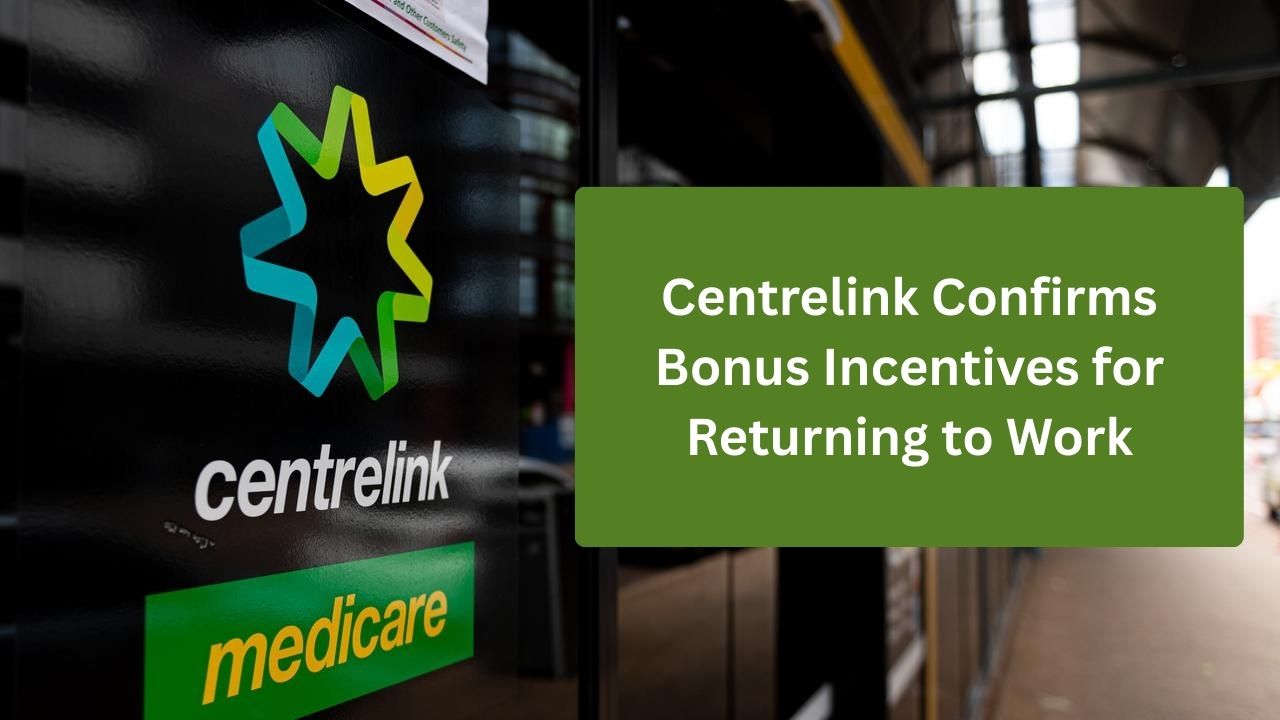In a significant update for Centrelink recipients, the Australian Government has formally acknowledged a new set of extra incentives for individuals returning to work. These modifications are intended to make it simpler, safer, and less financially burdensome for those who want to resume working after a long absence. Whether someone is on JobSeeker, Parenting Payment, Youth Allowance, or other income assistance programs, the new incentives seek to alleviate the concern that many people have about starting a job.
For years, countless Australian individuals have declined job offers because they are concerned that their Centrelink benefits will be cut off immediately. Others are wondering if part-time work will make them better off after deductions. The government claims that these incentives were meant to break the cycle and give individuals confidence that going back to work will be rewarding.
Why Centrelink Is Making These Changes
Returning to work has become a huge national topic. Many businesses, including hospitality and retail, as well as elderly care, construction, and health services, are experiencing labor shortages. At the same time, many people receiving Centrelink assistance claim they want to work but are stuck in a tough circumstance.
Common issues are:
- “What if I lose my payment too quickly?”
- “What if I can’t keep up with my bills if the job doesn’t last?”
- “What if casual hours change and my payment doesn’t come back fast enough?”
- “What if the job doesn’t pay enough to cover transport and food?”
What the New Bonus Incentives Include
The return-to-work package consists of several critical components. All of these are intended to provide people more breathing room as they transition from benefits to normal employment. Here are the major differences, stated in ordinary terms.
1. You Can Keep More of Your Centrelink Payment When You Start Working
This is among the most critical upgrades.
Under the previous arrangement, once a person began earning money from work, their Centrelink payout decreased rapidly. For someone performing part-time or casual employment, this made working seem useless – they earned more but lost more.
The new incentive allows people to maintain more of their Centrelink payments while adjusting to their new jobs. Payment decreases will now be significantly slower. This allows people to stable their income and gain confidence.
2. Higher Income Thresholds Before Payments Are Affected
This reform is excellent news for casual and part-time employees.
The government is raising the amount of income a person may make before their Centrelink payout begins to decrease. This means:
- You can work extra hours.
- You can make extra money.
- You can take more shifts.
- You can accept short-term jobs.
3. One-time Return-to-Work Transition Bonus
This is the new support payment.
Anyone who has been on Centrelink for a long time and accepts a job will get a transition incentive to help with the initial costs of commencing employment. These costs may include:
- Transport to and from the workplace
- Clothing for work
- Food during working hours.
- Safety gear
- Training and certification expenses
4. A slower phase-out of payments
Payments under the prior system plummeted so quickly that many individuals felt penalized for attempting to work. For example, earning even a tiny sum might lessen their payout for the next two weeks.
The new system implements a gentle landing, allowing payments to phase off more gradually.
This modest decline implies:
- No abrupt decline in revenue.
- No financial shock.
- More stable budgeting.
- Less worry of shifting hours.
Who Will Benefit From These Incentives
The new return-to-work benefits are not just for one group. They apply to a wide range of Australians who want to work but feel uncertain.
Here’s who benefits the most:
1. Long-term job seekers.
People who have been out of employment for months or years will receive the most help. They frequently encounter problems such as:
- Low confidence.
- Skill gaps
- Fear of losing money.
- Difficulty getting back into routine
2. Older Australians nearing retirement age
People over 55 who choose to work part-time or casually will benefit from bigger income exemptions and slower payment decreases.
3. Young People Starting Work.
Youth Allowance claimants sometimes suffer with unpredictable or informal hours. These incentives assist students and young workers avoid losing financial support too soon.
4. Migrants and New Residents
People transitioning to the Australian work culture frequently require time to establish a consistent income. The incentives offer them more time to settle.
Why These Changes Matter
The new return-to-work incentives are a big deal for several reasons:
1. More people will feel comfortable accepting work.
The anxiety of missing payments vanishes.
2. It addresses Australia’s workforce shortage.
Industries experiencing a labor shortage may receive more job candidates.
3. It Supports People Trying to Regain Independence
Work provides security, confidence, and advancement.
4. It helps families.
A more stable transition implies fewer financial shocks for households.
5. It supports regional areas.
Rural areas frequently rely on casual and seasonal jobs.
6. It promotes long-term opportunities.
Many people transition from part-time or casual work to full-time positions once they feel secure there.
Public Response Across Australia
The response has been mostly positive:
- Job seekers: Say they now believe that working will not make their situation worse.
- Employers: I’m hoping it will increase job applications and minimize staffing shortages.
- Community Support Groups: Believe that the incentives will assist vulnerable people regain their independence.
- Economists: We believe that the modifications will greatly enhance worker participation.








Leave a Reply